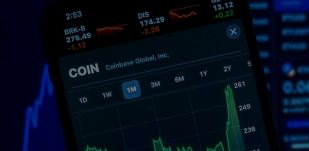What is an IBAN?
IBAN stands for International Bank Account Number, a standardised global numbering system that identifies different bank accounts and their respective countries around the world.
Initially developed to facilitate payments within the European Union, an IBAN makes it easier for banks to process cross-border payments. An IBAN isn’t a replacement for your normal bank account number; it dovetails with it to help speed up international payments, interbank transfers and international wire transfers.
How do I find my IBAN?
You can find your IBAN on any of your bank statements or in your account details within the secure area of your online bank.
What does an IBAN look like?
An IBAN (comprised of up to 34 alphanumeric characters) includes information about which country, bank, and account an incoming payment is coming from.
Let’s break the number down:
- The first two letters are the ISO 3166-1 alpha-2 country code. For example, GB for the UK or DE for Germany.
- The next two digits are the check digits. The check digits enable a check of the bank account number to confirm its legitimacy before submitting a transaction.
- The rest of the IBAN is known as the Basic Bank Account Number (BBAN). It contains up to 30 alphanumeric characters, which represent the bank’s domestic account number, a unique branch identifier code and potential routing information.
You can use an IBAN calculator to work out the number.
Who uses an IBAN?
Examples of countries where you can make a bank transfer with an IBAN:
- Countries in Europe (including the UK), the Middle East, North Africa and the Caribbean.
Examples of countries where IBANs are not used:
- The USA, Canada, Australia and New Zealand - all of these countries have their own established systems for handling international payments.
How does an IBAN work?
Your IBAN ensures you are safeguarded by a system that checks the validity of account data before sending funds between international banks. When you make international payments, the letters and numbers that make up your code are entered into the payments system used by your bank, which conducts an IBAN check. Having verified the characters against its database, the bank can confirm your account and that of the recipient. If the account is valid, the payment will be processed.
When do you need to use an IBAN?
The IBAN format is commonly used within the EU - including in Ireland - as well as in several countries outside the bloc: the UK, Norway, Switzerland, Hungary, and Liechtenstein. If you want to make a SEPA (Single Euro Payments Area) transfer you will need an IBAN. SEPA facilitates cheaper, safer, and faster international payments across Europe, as well as transparent pricing using centralised payment schemes and standards.
If you’re making an international money transfer from the US to an account in Europe, it’s likely you will need your recipient’s IBAN.
What is the difference between IBAN and SWIFT?
SWIFT (Society for Worldwide Interbank Financial Telecommunications) - also known as a bank identifier code (BIC) - and the IBAN are both internationally-recognised banking standards used for streamlining international payments. However, there are some key differences between each system:
- The SWIFT system was created before international banking transfers were integrated through the use of IBANs. SWIFT has evolved into the largest international payment system worldwide.
- The IBAN system identifies an individual account linked to a specific bank in a specific country. A SWIFT code helps overseas banks to identify which bank to send money to. Therefore, a SWIFT code is always required to process a transaction and an IBAN is required to locate the beneficiary banking account in countries participating in the IBAN system.
- Unlike SWIFT codes, IBANs aren’t assigned by a central organisation; they are directly issued by the banks according to a format defined in the IBAN registry.
- Their format also differs, with SWIFT codes containing a combination of numbers and letters between eight and 11 characters.
Get jargon-free currency guidance with Clear Currency
Understanding the intricacies of the international payments process can help you to take control of your requirements.
When you join Clear Currency you will be assigned a dedicated account manager who can help you cut through the jargon of the foreign exchange market and offer tools to shield your international payments from exchange rate fluctuations.
Open your free account today for quick, secure, and cost-effective international currency transfers.
Related Articles
How to Mitigate Foreign Exchange Risk
Currency risk can have a significant effect on the efficiency and profitability of any international business. Each exchange rate movement affects how much you receive from sales and what you pay to suppliers.
Read more
Moving to Dubai from the UK: Checklist
You’re ready for a new life overseas and have decided you’re moving to Dubai. Now it’s time to consider the various costs involved, from your visa and accommodation, to health insurance, shipping your belongings and bringing your beloved pets along too.
Read more
Currency Outlook Quarter 1 2023
Clear Currency looks back at the performance of the US dollar, euro and sterling in Q4 2022, and assesses what might be in store for Q1 2023.
Read more


